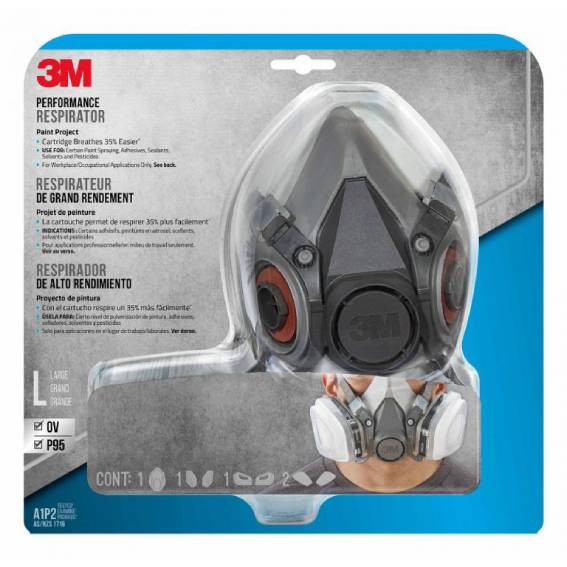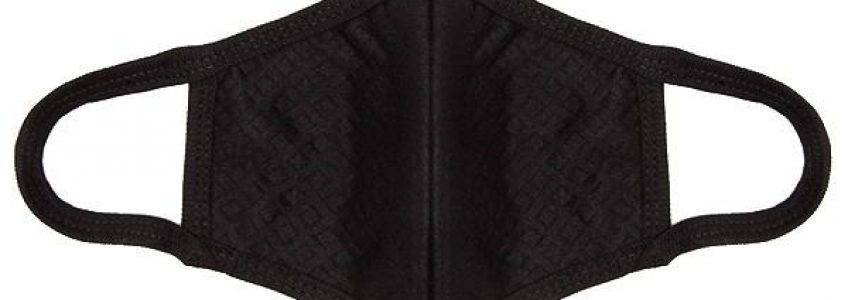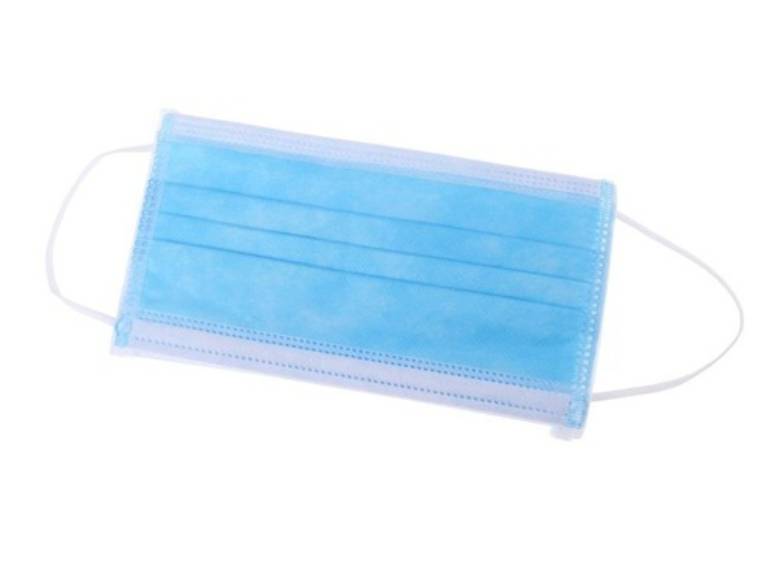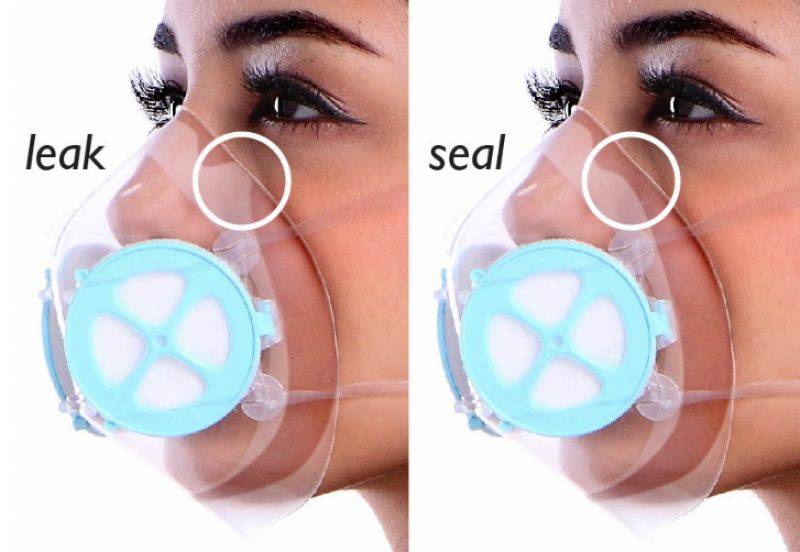What you need to know about face masks before getting one

Face masks are Personal Protective Equipment (PPE) which people use during renovation and simple D.I.Y home improvement works. There are many types of masks available and they range from disposable cup-style or half-face reusable masks for you to choose from.
Here are 5 things you should know about face masks to make sure that you are getting the right one!
WHY SHOULD YOU WEAR FACE MASKS FOR D.I.Y PROJECTS AND REMODELLING WORKS?
With proper respiratory masks, you can breathe easy and perform your work more effectively. Face masks work by ensuring that the airways are not irritated by dust and the lungs are protected against harmful vapours and other particles.
1. DIFFERENT TYPES OF MASKS ARE DESIGNED FOR DIFFERENT PURPOSE

DUST AND MOLD MASK
The dust and mould masks are effective against dust, mould, pollen and other solid particles. They prevent dust, which is produced during sanding, drywall sanding, rust removal and fibreglass installation, from getting into the airway and lungs.
An N-95 mask is also known as "air-purifying particles respirators", which protects the wearer by filtering particles out of the air but not against gases or vapours. Aside from haze, airborne biological agents such as germs and viruses, can also be filtered by particulate respirators. N95 respirators have a filtration efficiency of 95 per cent.

GAS AND VAPOUR MASK
The gas and vapour masks protect against harmful gases and vapours and come in multiple chemical filter or cartridge configurations. Also known as a chemical cartridge/gas mask respirator, these "air-purifying chemical respirators" filter and clean chemical gases out of the air as you breathe.
They are effective only if used with the correct cartridge or filter for a particular chemical substance. However, they do not usually filter out airborne particles unless their cartridge has a filter to remove particles.

PAINT AND ODOUR MASK
The paint and odour masks are particulate respirators that are effective against paint odours and latex paint. They have filtration efficiency against solid and liquid particles. Respirators in this family are rated as "N," if they are Not resistant to oil, "R" if somewhat Resistant to oil, and "P" if strongly resistant (oil Proof).
2) FACE MASKS CAN ALSO PROTECT YOU FROM THE AIRBORNE VIRUS

In case you have missed the news; the Wuhan virus has officially reached the Singapore shores on 23rd January a few days ago. For the uninitiated, Wuhan virus (2019-nCov) is a new respiratory coronavirus which has a mortality rate tracking at roughly 3 per cent (based on the reports so far).
As a comparison, the mortality rate for Severe Acute Respiratory Syndrome (SARS) is around 14 per cent to 15 per cent, and Middle East Respiratory Syndrome (MERS) is 30 per cent to 35 per cent.
[[nid:475836]]
It has been medically established that wearing masks generally decrease viral exposure and infection risk; since wearing a mask prevents you from spreading germs to others when you are not feeling well and vice-visa since it stops the droplets of saliva and mucus, carrying airborne viruses, from being passed into the air when one coughs or sneezes.
Nevertheless, although N95 respirators filter out most airborne particles and most airborne biological agents, from the surrounding air, they are only effective against particles and pathogens down to 0.3 microns in diameter.
Note: Although there are reports that the Wuhan coronavirus is actually 0.12 microns in diameter and hence, N 95 face masks might not be entirely effective. Nevertheless, masks still lower the risk of an infected person spreading the coronavirus to others via saliva or phlegm.
3) COTTON FACE MASKS MIGHT NOT BE EFFECTIVE AGAINST AIRBORNE BACTERIA, VIRUSES AND DUST

Cotton face masks come in myriad of colours and cute patterns. They fall under reusable masks since they can be washed. However, they might not be effective against tiny droplets since the pore sizes in most reusable mask designs are too big to filter out the droplets and dust.
Furthermore, washing the cotton face masks might aerosolise* the germs too.
*Tiny liquid droplets which contain infectious virus and/or bacteria are released like an aerosol into the atmosphere.
4) A SURGICAL MASK IS DESIGNED TO KEEP LARGE PARTICLE DROPLETS AND SPLATTER FROM PASSING FROM A PERSON'S MOUTH TO NEARBY SURFACES OR PEOPLE

The surgical masks are designed to keep the wearer from large particle droplets and splatter from a person's mouth to nearby surfaces or people. Hence, they are looser-fitting and is usually made of 3 layers, 2 outer layers (1 white and another coloured), and a middle layer which is the filter.
Surgical masks should have a filtration efficiency of 80 per cent or higher. These masks are only meant to be used in the healthcare industry and not suitable to be used for renovation and D.I.Y home improvement projects.
Tip: Wear the surgical mask with the coloured layer facing outwards. The white layer is an absorbent material, to absorb the humidity and mucus. Both the middle and coloured outer layers are water-repellent to prevent any fluids from being absorbed into the mask.
5) LOOKING FOR A CUSTOMISABLE MASK? TOTOBOBO MASK MIGHT BE YOUR ANSWER

[[nid:475790]]
Totobobo specialises in customised mask which fits the contours of your face for maximum protection and comfort. This mask stands out from others due to its 3 unique features: "watermark" feature where the frosty surface turns transparent once it is contact with wet skin.
Hence, this makes it easy to identify any gaps between the mask and the face. It can also be easily reshaped and trimmed for a much better fit. Based on this review, it has quite a high performance and protects up to 92-99 per cent of air particles.
HOW TO PURCHASE A MASK THAT FITS?
When buying your masks and respirators, check for the following:
This article was first published in Renonation.